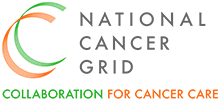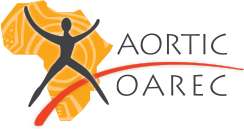Research
Global collaborative partnerships accelerate efforts to bridge the research gap, particularly in the areas of prevention, implementation and translation, to improve cancer outcomes worldwide.
Global collaborative partnerships accelerate efforts to bridge the research gap, particularly in the areas of prevention and implementation and knowledge translation, to improve cancer outcomes worldwide. Countries and world regions need cancer research tailored to their unique disease burden and knowledge gaps to improve population health. Knowledge created in cancer prevention, early detection, treatment, and survivorship care in one country may not be translated to other countries due to differences in health systems, health care infrastructure, risk factor and disease characteristics, and sociocultural factors. In addition to saving lives from cancer, research also creates national wealth through innovation.
However, bibliometric analysis reveals a significant global disparity in cancer research output: in 2023, low- and middle-income countries (LMICs) account for about 10% of all publications (Figure 40.1), although they account for 70% of the total cancer deaths worldwide. Reasons for the disproportionately low research output in these countries include lack of funding, trained manpower, research infrastructure, data, and partnerships between the global north and global south. However, there are efforts by major funders to support collaborative research projects based on equitable partnership.
Only about 40% of cancer research focuses on low- and middle-income countries, although they represent more than 70% of the global cancer deaths.
Proportion of cancer related publications by world, by World Bank income group, 2024
In addition, there has been progress in promoting and expanding cancer research in LMICs through south-south collaborations to address overlapping public health problems. Examples of these collaborations include the African Organization for Research and Training in Cancer (AORTIC), the African Research Group for Oncology (ARGO), National Cancer Grid of India, and the Research for Health in Conflict Middle East and North Africa (R4HC MENA) (see Uniting Organizations, Figure 40.2).
Examples of international and national research programs in low- and middle-income countries
Over the next decade, LMICs should prioritize reducing the burden of cancers at advanced stages, improving access and affordability of cancer care, conducting country-specific health economic assessments, scaling up quality improvement research, and leveraging new technology to enhance cancer control efforts (Figure 40.3). Meeting the goals of cancer research requires dedicated commitment from governments, policymakers, funding agencies, health care leaders, researchers, and the public.
Five key research priorities for low- and middle-income countries over the next decade

Footnote
Adapted from Pramesh CS, Badwe RA, Bhoo-Pathy N, et al. Priorities for cancer research in low- and middle-income countries: a global perspective. Nature Medicine. 2022/04/01 2022;28(4):649-657.



